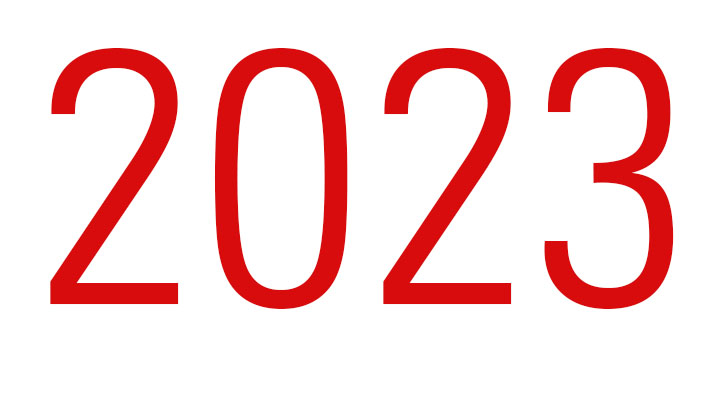
The Bank of Canada has been staying pat at 5% since the last hike in July, but despite the continued hawkish stance, the wording of the latest announcement has led economists to speculate about potential interest rate cuts around the corner.
One way to gauge when that might occur is to look at the factors that drive rate increases.
The Bank of Canada adjusts interest rates based on various economic indicators and events. Some key factors that inform the central bank’s decisions to nudge rates higher include inflation, strong economic expansion, high employment rates and stable global economic conditions. When these indicators reverse course, central banks are forced to shift a few levers to bring things under control. Lowering interest rates is one of them.
When the BoC senses spiralling inflation and stress on the economy, it tends to make the case for lowering rates, says Darren Sissons, partner and portfolio manager at Campbell, Lee & Ross.
“That stress will manifest as job losses, credit provisions for banks, especially for consumers,” he says.
In other words, keep a close eye on the same things the BoC watches to understand when the time may be right for the rates to climb down: GDP, unemployment, CPI, inflation expectations, wage growth, and retail sales.
“Or you could just watch the two-year bond yield, which distills it all to a single number,” says Robert McLister, mortgage strategist at FixedOrVariable.ca & editor at MortgageLogic.news, “As we speak, [as of Dec 15] the two-year yield is dipping below its 18-month moving average, a historical signal for coming cuts.”
This is a statistically significant event, reflective of a market that thinks 2024 cuts are now highly likely, he adds.
Global Economic Trends to Watch
Most central banks, including the BoC, closely monitor the global economic environment and the U.S. Federal Reserve policies to inform their own policy decisions, including interest rate cuts.
“The U.S. sets global interest rates,” asserts Sissons, but adds a spike in unemployment may force a pivot towards lower rates.
However, since the labour market in Canada is reasonably strong, “perhaps the trigger is mortgage refinancing pressure in mid-2024,” he adds.
The U.S., by contrast, does not have a major mortgage re-finance issue “as most American mortgage holders have fixed-interest-rate mortgages for 30 years,” Sissons argues.
The BoC also keeps close tabs on any slowdown in the global economy, which “weighs down demand for Canadian goods and services, and in turn, depresses inflation,” says McLister.
Timing on cuts will, thus, depend largely on how fast and far core inflation falls. For meaningful rate cuts, it has to fall to the 2% target range in the first half of 2024. Barring, of course, an unforeseen crisis posing a major systemic risk, “such as the failure of Lehman Brothers in 2008, which triggered the Global Financial Crisis,” Sissons notes. In the recent past, the COVID-19 pandemic was another such event that forced BoC to pare back its overnight interest rates in response to the financial fallout of the global health crisis.
When Will the Bank of Canada Cut Rates?
The BoC has raised rates 10 times since early 2022 to tame runaway inflation. However, the bank’s tone more recently has signalled the hiking cycle may be over.
With GDP contracting and the jobless rate ticking higher, economists who watch the central bank expect the bank will start to cut its rate sometime in 2024. According to economists polled by Reuters, an interest rate cut is forecasted for the second quarter of next year.
“Timing is somewhat tricky,” admits Sissons, but identifies two rate cut triggers: first, a rise in unemployment; second, business or consumer stress “as it relates to rising net leverage for households, nonperforming loans and bankruptcies.”
McLister says he’d like to see average core inflation slip back to the 2% range, however long that may take. As well, he’d “want to see unemployment climb into the 6% range, along with a few months of overall job losses.”
For now, though, the labour market remains too strong, despite an uptick in the unemployment rate. “The last thing you’d want is to spark another inflationary home-buying frenzy,” notes McLister.
The Impact of Rate Cuts on Canadians
If the interest rate falls, it would lower the cost of running and funding business operations which would “stimulate further investment and business growth,” says Sissons.
For consumers, he adds, a rate cut would mean normalization of spending which was held back by a higher cost of living. “Anecdotally, a fall in interest rates is tied typically to a decline in inflation so that would also benefit both consumers and corporates,” Sissons notes.
Then there’s the implication for the real estate market. “Home values should re-inflate,” says McLister, adding that “given enough time, we’ll see a GDP and jobs rebound.” However, he warns there's a genuine risk of inflation making a comeback, and the Bank of Canada is well aware of that. “That’s why, as a borrower, I would not rely on [the possibility of] large, rapid and continual rate cuts, unless perhaps there’s a global crisis out of left field,” says McLister to temper expectations.








.jpg)










